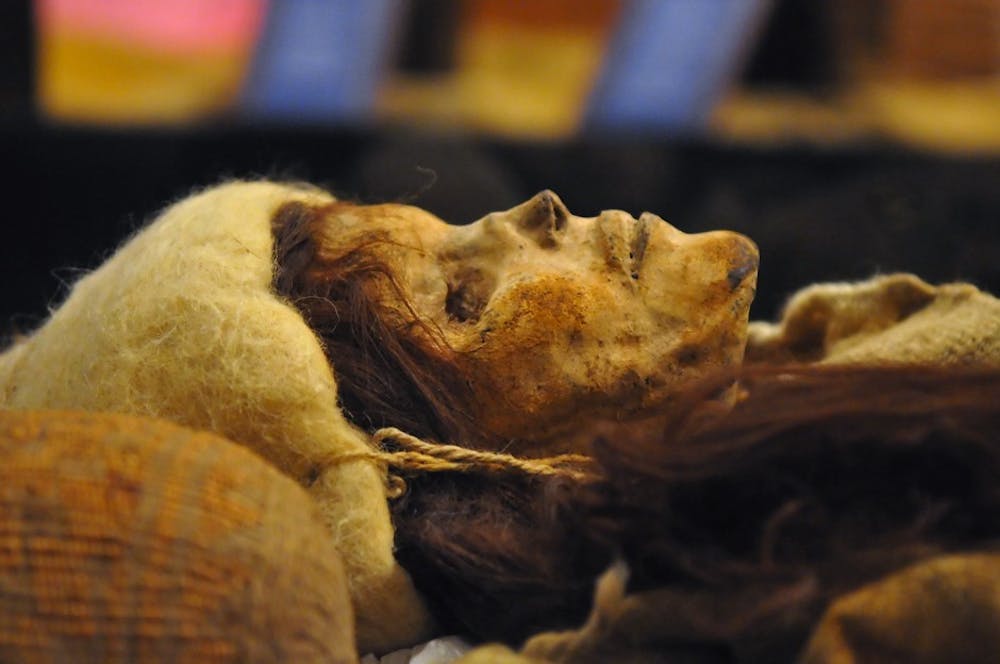At the Penn Museum of Archaeology and Anthropology, all systems are go.
On Friday, the “Secrets of the Silk Road” exhibit finally opened to East Coast audiences after artifacts were initially pulled in what Chinese Language and Literature professor Victor Mair described as a “horrible bureaucratic snafu.”
Lin Ruihua, a representative from the Cultural Affairs Office of the Embassy of the People’s Republic of China, recounted the story of Mair coming to his office and explaining the significance of the exhibit’s presence at the Penn Museum.
After Mair’s visit and negotiations between Chinese and American ambassadors as well as Penn officials — including 1987 College graduate Jon Huntsman Jr. — the University was granted permission to display the ancient relics.
Over 100 artifacts are on display from Eastern Central Asia. They range from 700 to 3,800 years old and include two mummies and the complete burial wrappings of a third mummy.
Because the exhibit draws upon multiple time periods and cultures, Richard Hodges, director of the Penn Museum, said the artifacts will “help us look at the globe in a new way.”
Mair said that the exhibit features artifacts that most Americans will never see again. “These are certainly endless treasures here,” he said.
College junior Anna-Lara Cook has been working with donors, ticket sales, special events and visitor services at the Penn Museum for this project.
Cook said that the Museum has seen a “huge response” to the “Silk Road” exhibit — especially since the artifacts were reacquired. She said that many people who had not planned on coming to the Museum decided to purchase tickets or memberships and that members have been renewing their memberships well in advance to see the artifacts.
With the assistance of a translator, Xinjiang Bureau of Cultural Relics representative Guo Jianguo explained that the “Silk Road” exhibit represents “cultural exchange” that has linked different civilizations for centuries — making it a means through which the United States and China can learn from each others’ cultures as well.
The complete exhibit, with the two mummies, will be displayed at the Museum until March 15.
The exhibit will continue from March 17 through March 28 — rather than June 5 as previously planned — with all artifacts except the two mummies.
The “Silk Road” exhibit is “really helping the museum get people involved,” Cook added. “There’s been a huge response from students and the community at large.”
The Museum expects to see thousands of people come to see the artifacts, though Cook said she hopes students will come to the Museum sooner than later because it is likely to sell out before it closes. Those with PennCards can access the exhibit on a free timed ticket.



